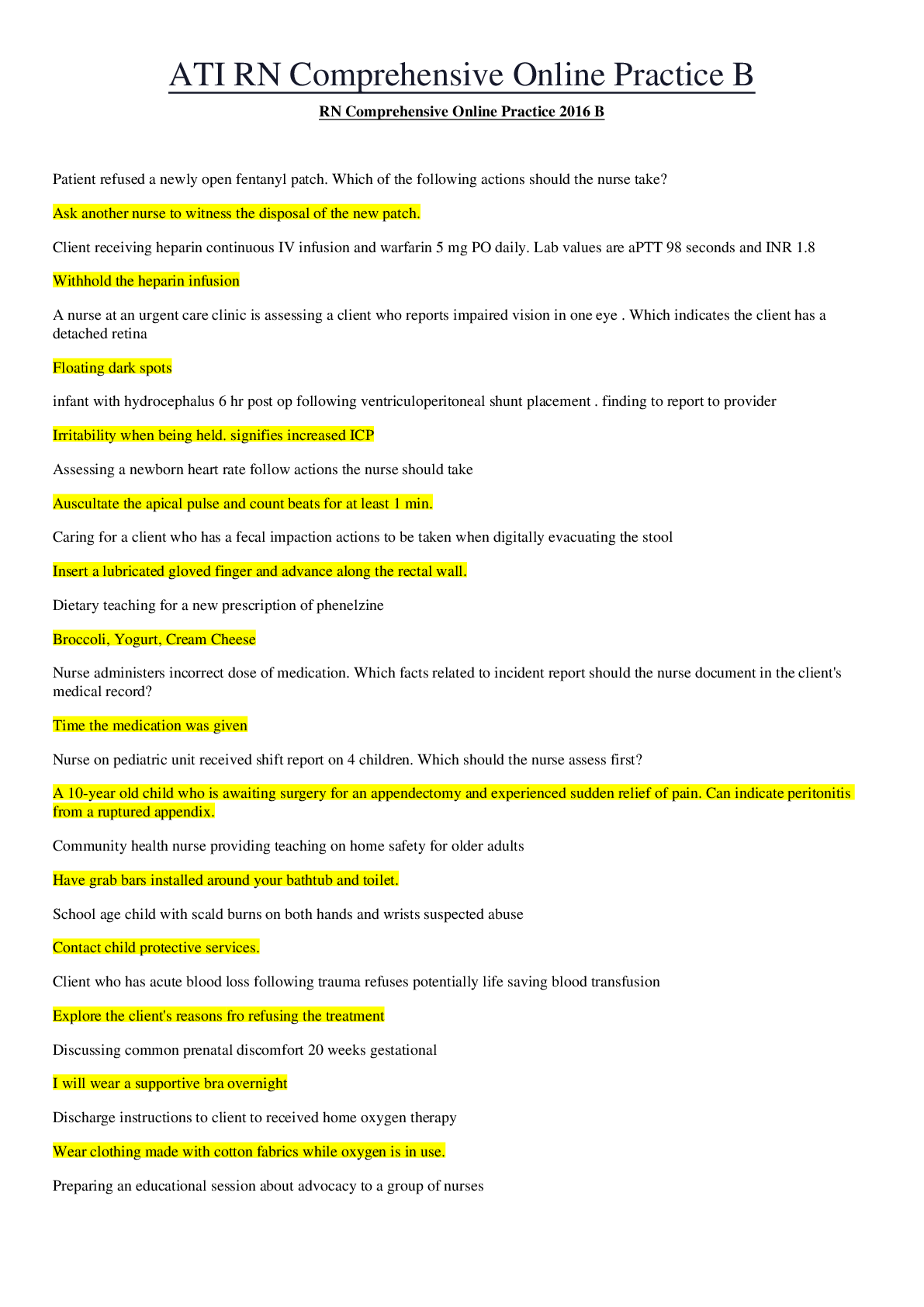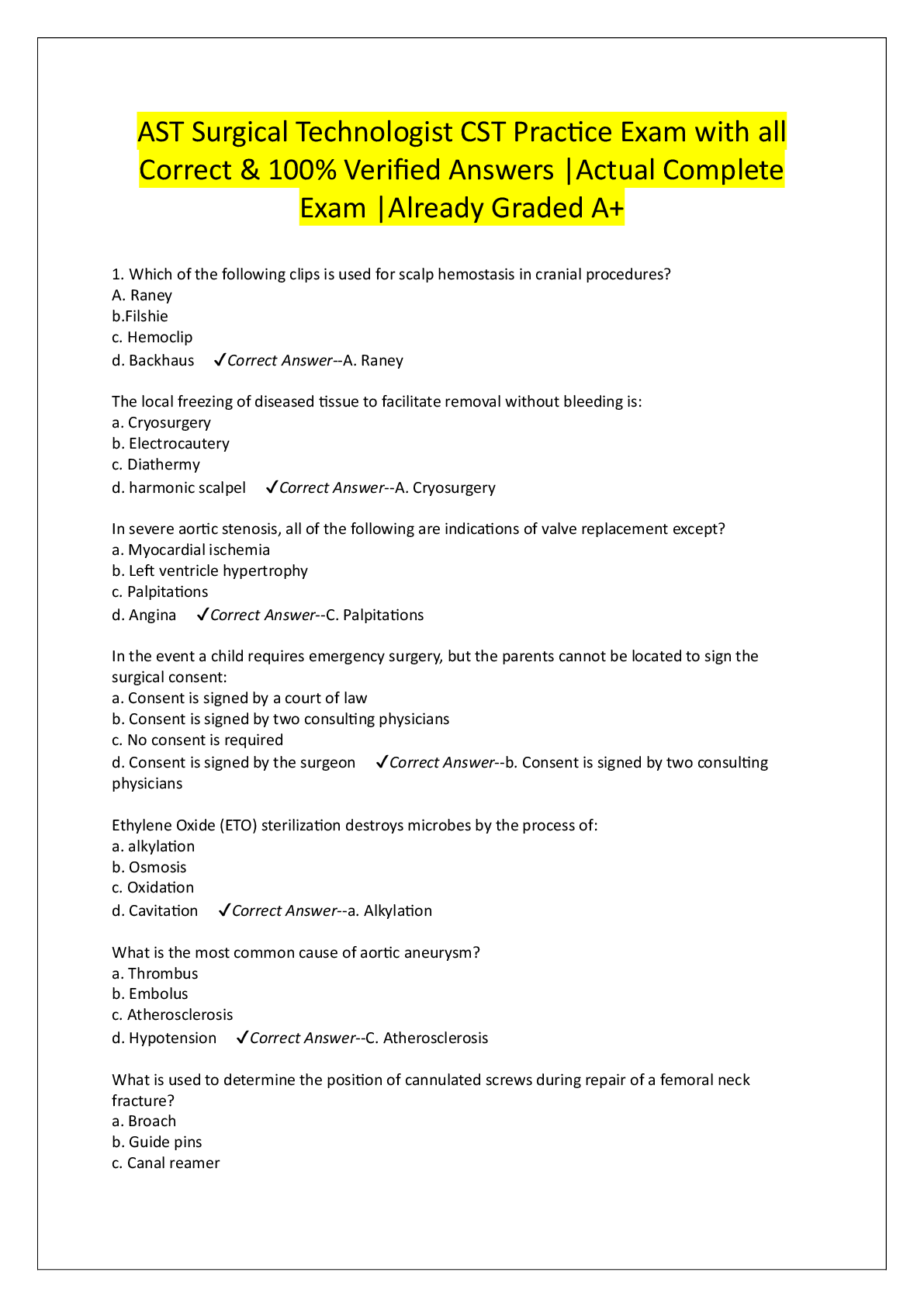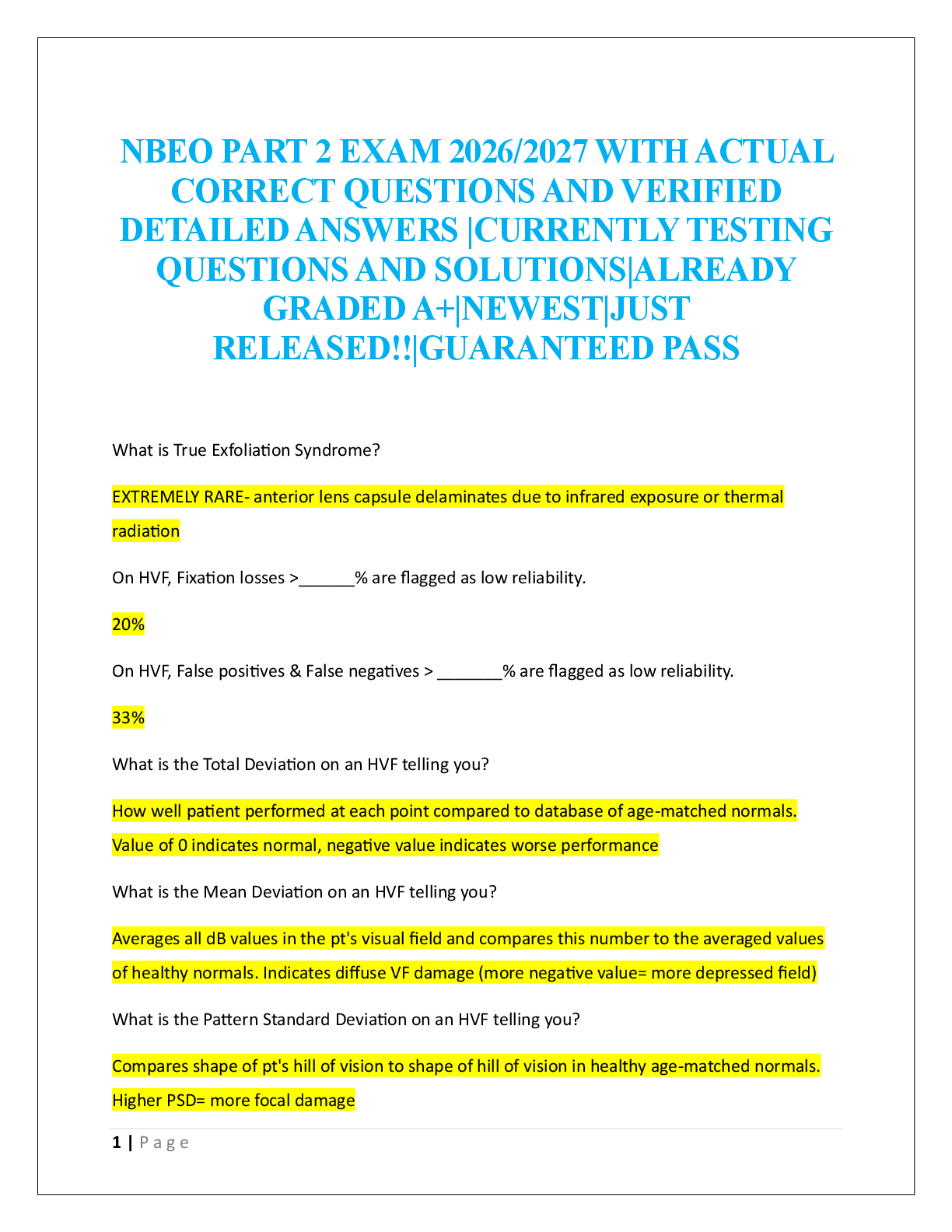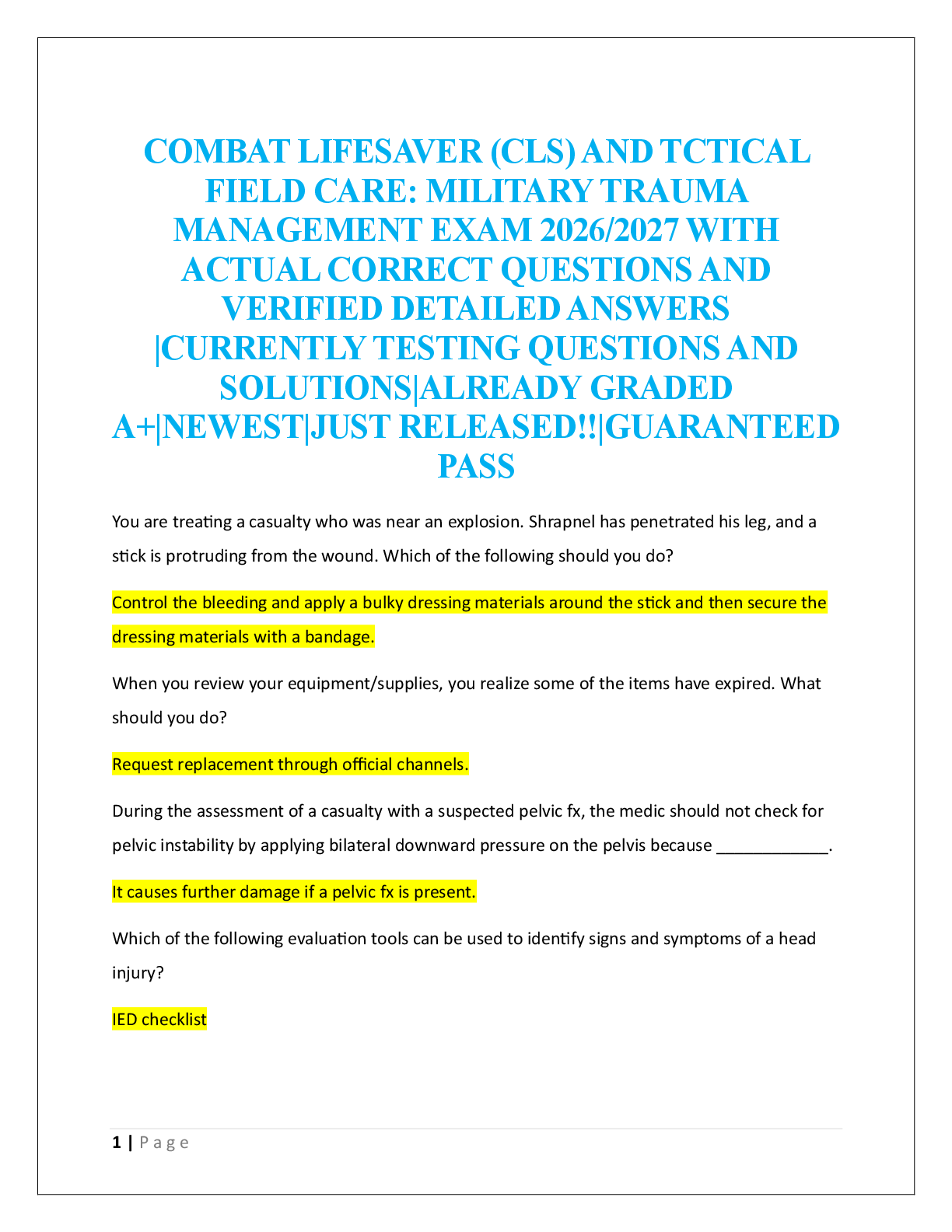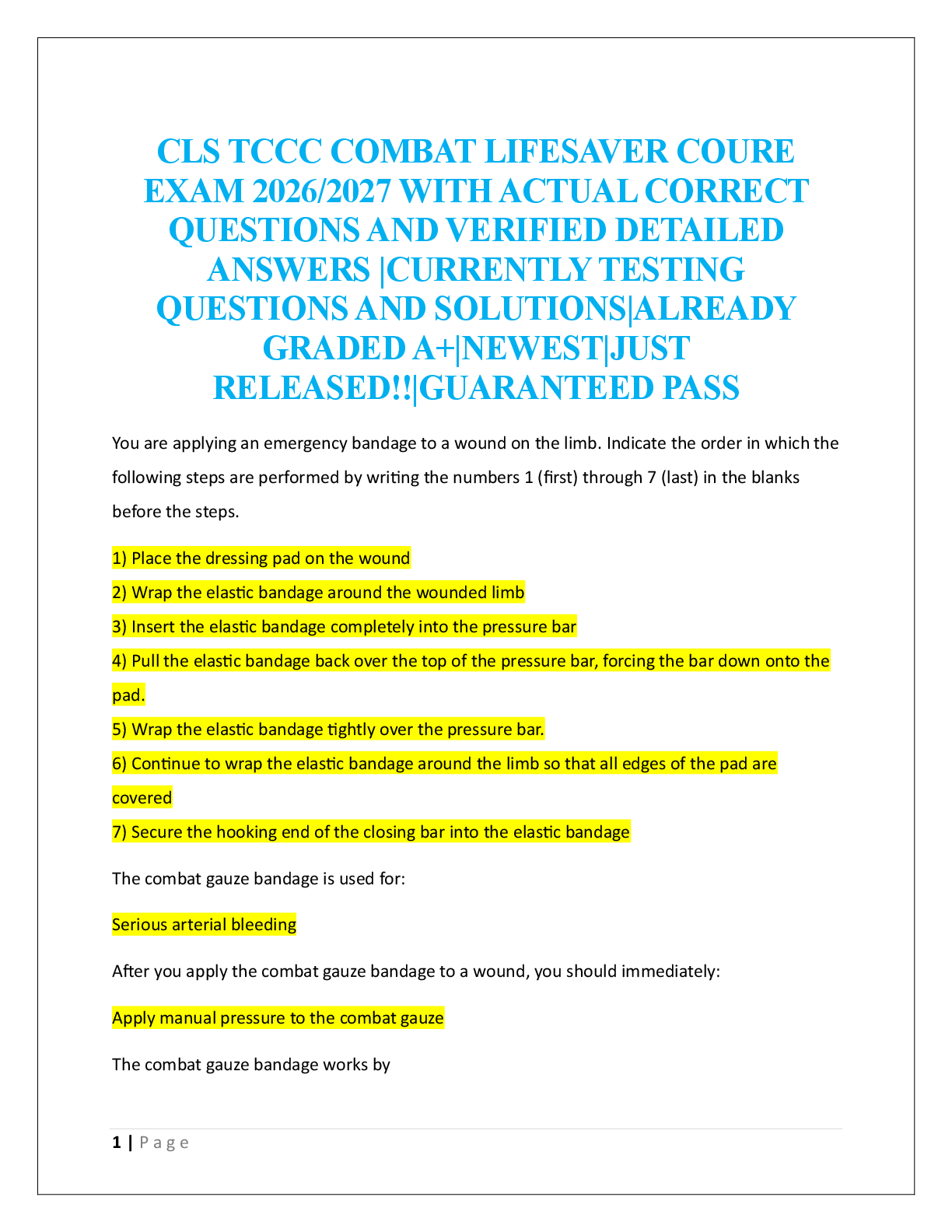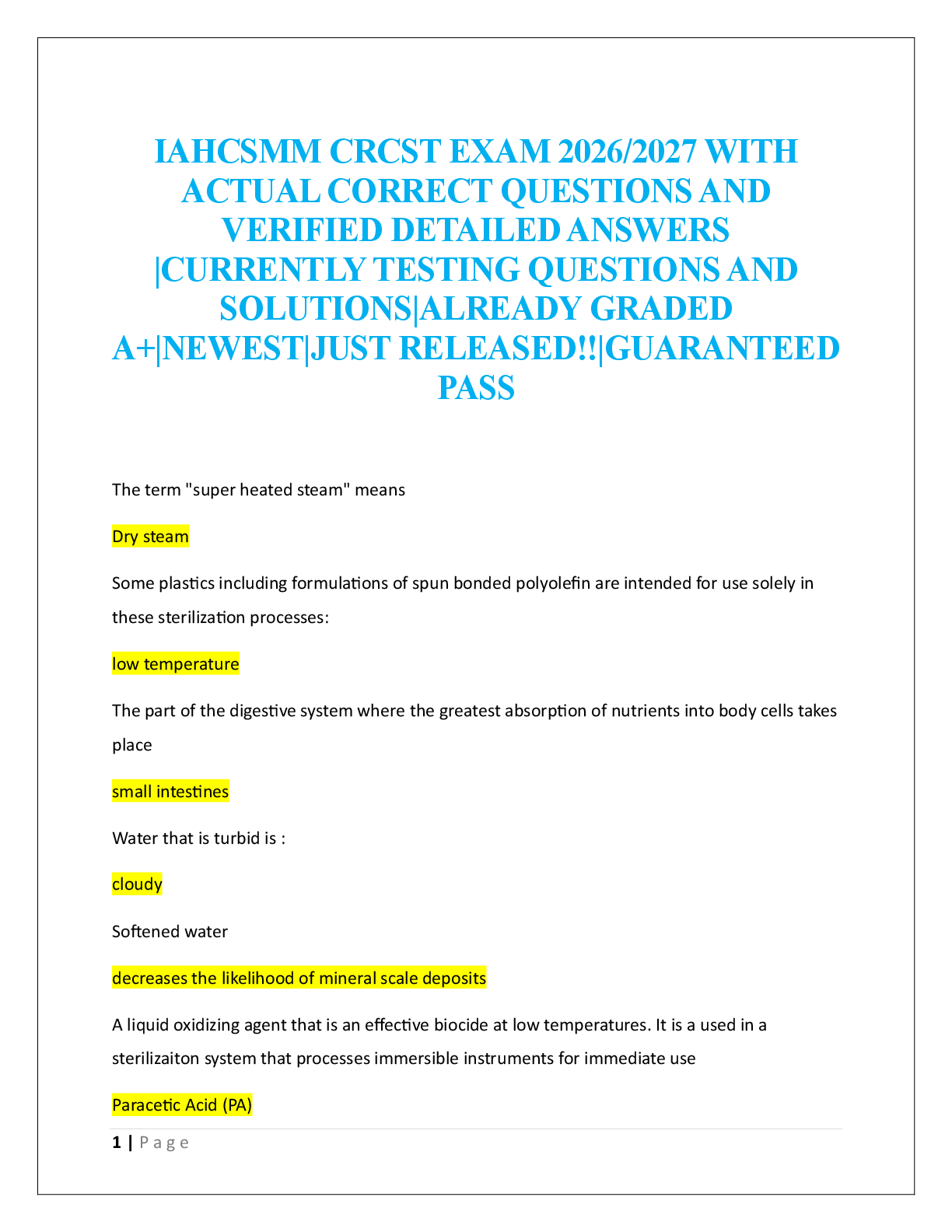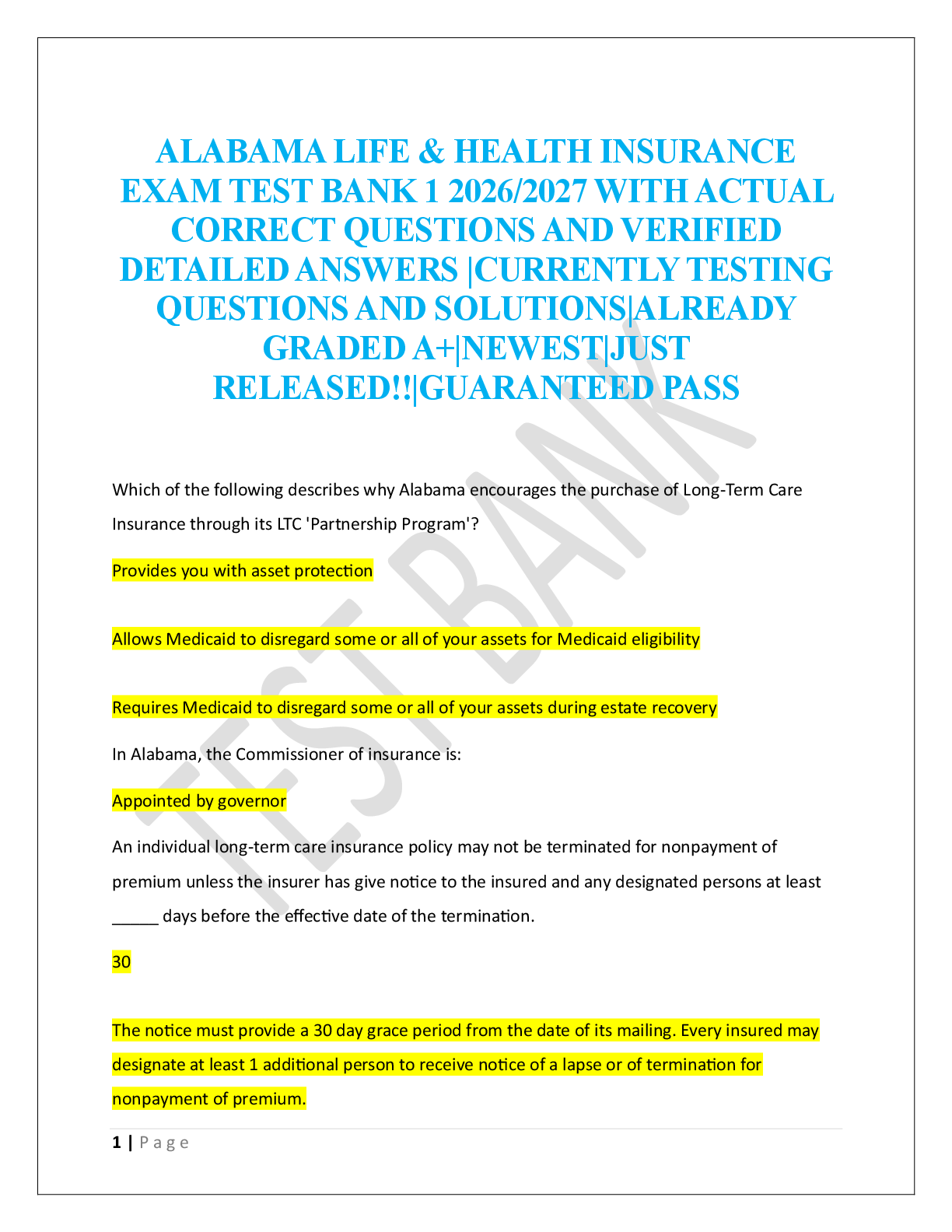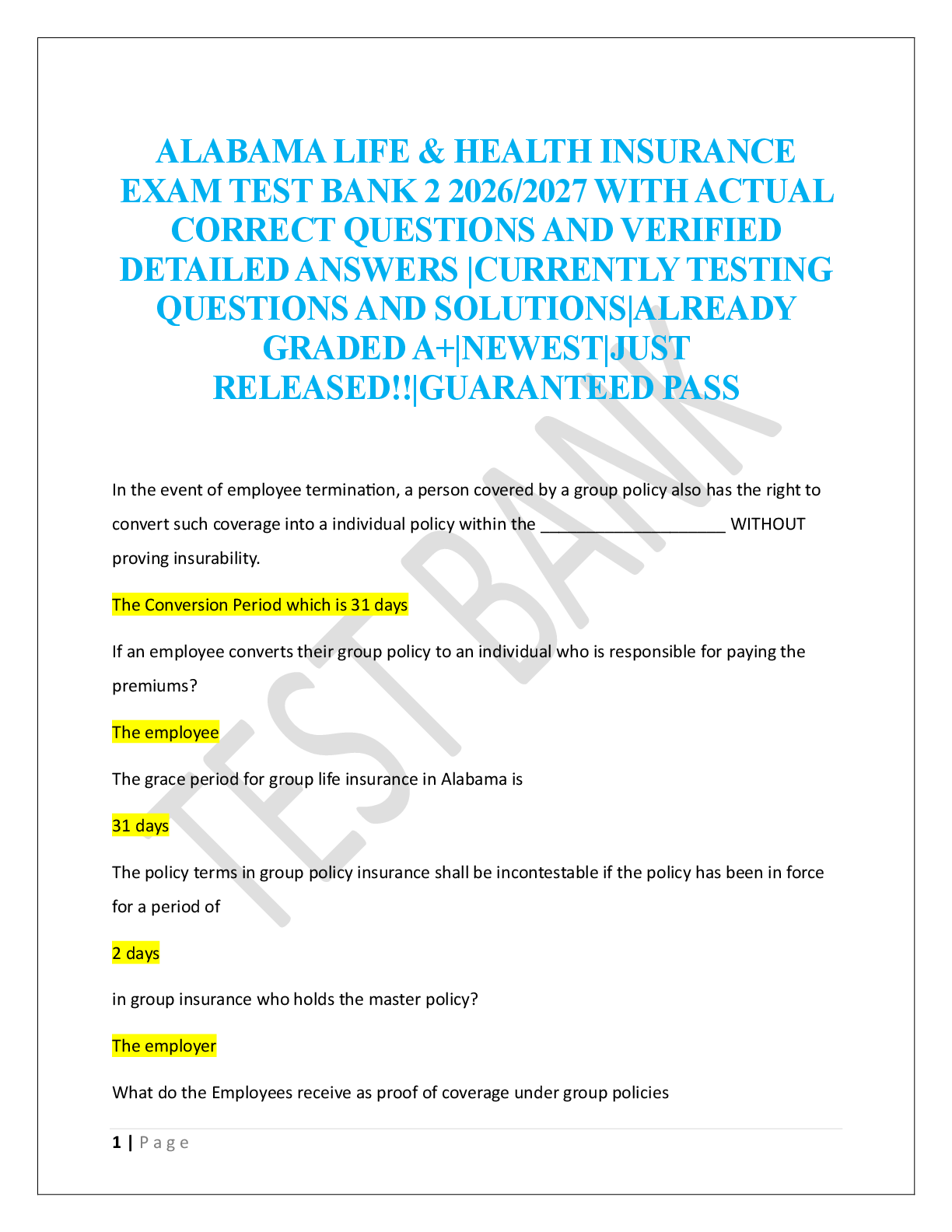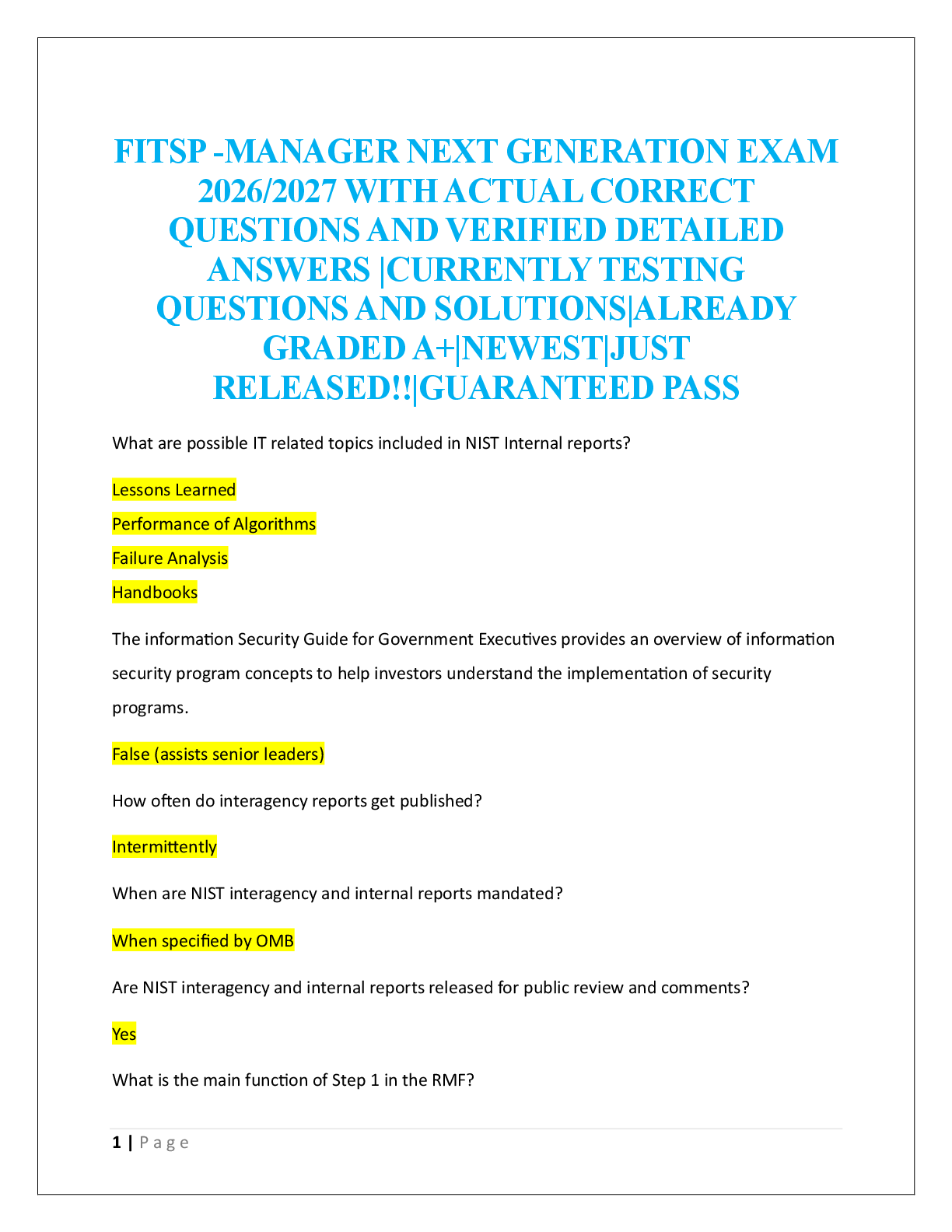Pathophysiology > EXAM > PATH 370 Pathophysiology Study Guide Chapter 38 – West Coast University | PATH370 Pathophysiology (All)
PATH 370 Pathophysiology Study Guide Chapter 38 – West Coast University | PATH370 Pathophysiology Study Guide Chapter 38
Document Content and Description Below
PATH 370 Pathophysiology Study Guide Chapter 38 – West Coast University Chapter 38 1. Jaundice is a common manifestation of a. malabsorption syndromes. b. anemia. c. liver disease. d. ... cholecystitis. 2. Esophageal varices may develop as a complication of liver disease. Pathophysiologically, this condition can be attributed to a. elevated bilirubin. b. diminished protein metabolism. c. fluid accumulation. d. portal hypertension. 3. Hepatitis B is usually transmitted by exposure to a. hepatitis vaccine. b. feces. c. blood or semen. d. contaminated food. 4. Hepatic encephalopathy is associated with a. hyperbilirubinemia. b. hyperuricemia. c. toxic effects of alcohol on brain cells. d. increased blood ammonia levels. 5. An increased urine bilirubin is associated with a. an increased indirect serum bilirubin. b. hemolytic reactions. c. Gilbert syndrome. d. hepatitis. 6. Liver transaminase elevations in which aspartate aminotransferase (AST) is greater than alanine aminotransferase (ALT) by a 2:1 ratio is characteristic of a. viral hepatitis. b. alcohol-induced injury. c. cirrhosis. d. acetaminophen toxicity. 7. A viral hepatitis screen with positive hepatitis B surface antigen, positive anti-HB core IgM, and negative anti-HB surface IgG should be interpreted as _____ hepatitis B. a. recovered from . b. immunity to c. chronic active d. acute 8. Hemochromatosis is a common genetic disorder that may lead to chronic liver failure. Which of the following laboratory data would support a diagnosis of hemochromatosis? a. Deficient protease inhibitor b. Elevated ferritin c. Elevated urine copper d. Positive antinuclear antibody 9. Which of the following forms of viral hepatitis is likely to be transmitted sexually? a. Hepatitis A b. Hepatitis B c. Hepatitis C d. Hepatitis E 10. Brain injury secondary to high serum bilirubin is called a. hepatic encephalopathy. b. hepatic meningitis. c. kernicterus. d. encephalitis. 11. Which of the following forms of viral hepatitis is likely to be transmitted oral-fecal? a. Hepatitis A b. Hepatitis B c. Hepatitis C d. Hepatitis E [Show More]
Last updated: 3 years ago
Preview 1 out of 3 pages
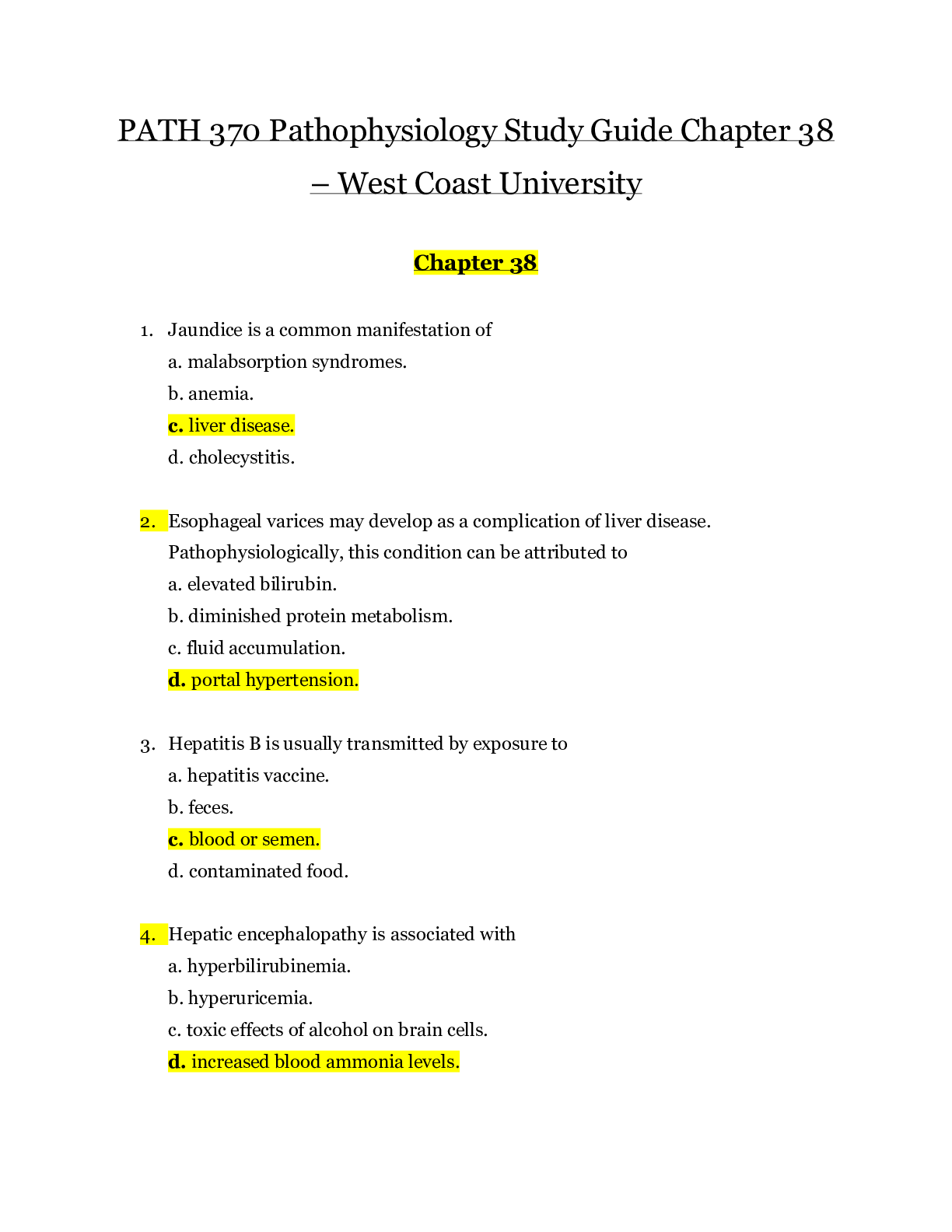
Buy this document to get the full access instantly
Instant Download Access after purchase
Buy NowInstant download
We Accept:

Reviews( 0 )
$8.50
Can't find what you want? Try our AI powered Search
Document information
Connected school, study & course
About the document
Uploaded On
Jul 28, 2020
Number of pages
3
Written in
All
Additional information
This document has been written for:
Uploaded
Jul 28, 2020
Downloads
0
Views
102








 – University of the People.png)
